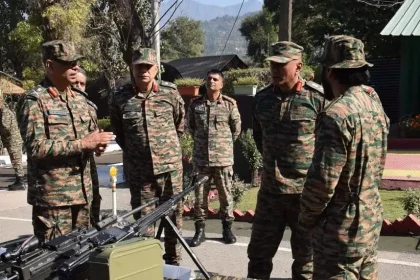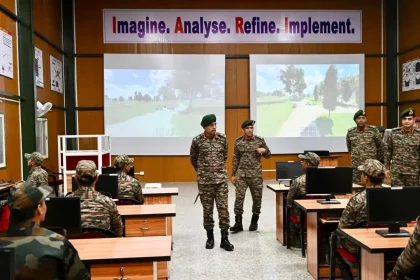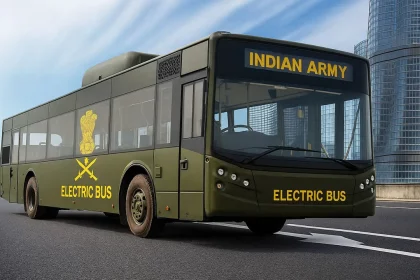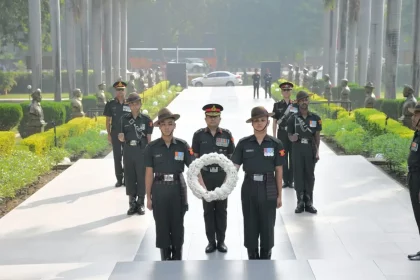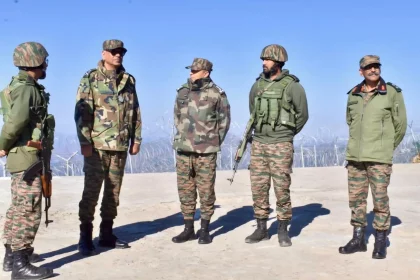Lt Gen Pratik Sharma Reviews Operational Preparedness Along LoC, Commends Troops for High Morale and Professionalism
Highlights Commitment, Coordination, and Combat Readiness in Challenging Terrains.
Lt Gen RC Tiwari Visits Eastern Command FPV Drone Node, Encourages Indigenous Innovation
Focus on Innovation, Self-Reliance, and Modern Warfare Capabilities.
Indian Army Signs ₹130 Crore Deal with JBM Auto for 113 Electric Buses
Indian Army signs ₹130.58 crore deal with JBM Auto to procure 113 electric buses and 43 fast chargers, marking its…
Maj Gen Salil Seth Lays Wreath at Smritika War Memorial as He Relinquishes Command of Madhya UP Sub Area
Maj Gen Salil Seth relinquished command of MUPSA after laying a wreath at Smritika War Memorial, lauding troops for their…
Lt Gen P K Mishra Reviews Operational Readiness in Poonch Sector
Lt Gen P K Mishra reviewed security and operational readiness in the Poonch Sector, lauding troops for their vigilance and…
Tamil Nadu Police DSPs Undergo Training at Madras Regimental Centre, Wellington
Tamil Nadu Police DSPs completed two-week training at MRC Wellington, gaining exposure to military tactics, modern technology, and civil-military cooperation.

